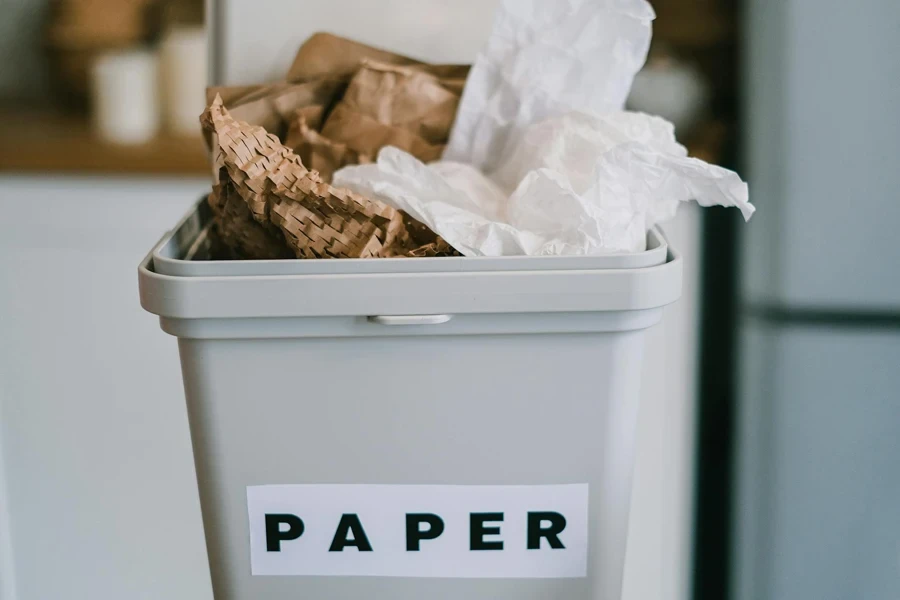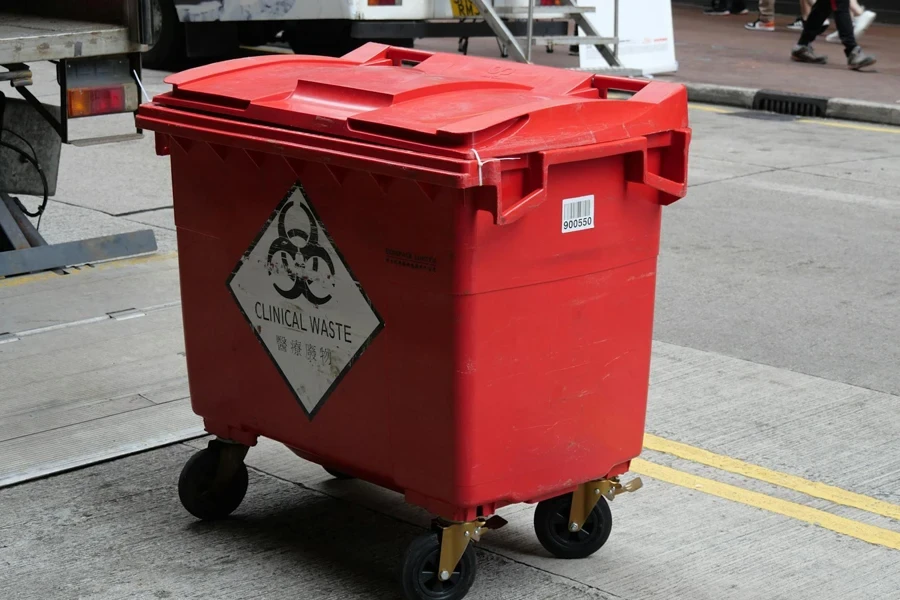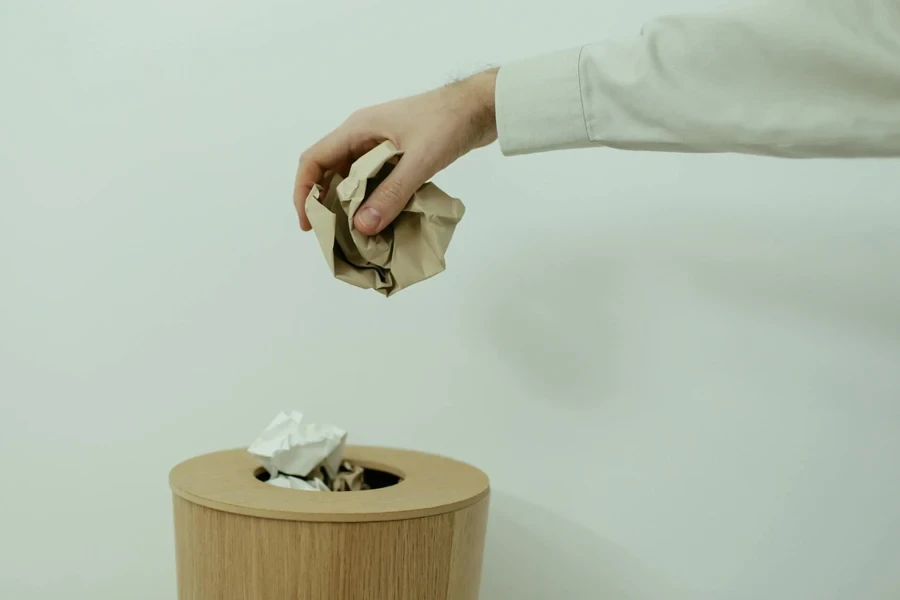Table of Contents
● Introduction
● Market overview
● Different types and their features
● Things to consider when selecting products
● Conclusion
Introduction

Selecting the right waste bin is crucial for efficient waste management, ensuring hygiene, and promoting sustainability in various settings. With the market offering a wide range of options, from pedal and sensor trash cans to open bins made of durable metal or versatile plastic, businesses can find solutions tailored to their specific needs. Understanding the latest market trends and features of different waste bins helps in making informed purchasing decisions, enhancing operational efficiency. Additionally, proper waste segregation using color-coded bins minimizes environmental impact and complies with regulatory standards. Investing in the appropriate waste bins not only supports a cleaner environment but also optimizes waste disposal processes in both household and commercial settings.
Market overview
Market scale and growth

The global garbage cans market was valued at USD 1343.15 million in 2021 and is projected to reach USD 3215.05 million by 2031, growing at a compound annual growth rate (CAGR) of 9.12% during the forecast period. This significant growth can be attributed to increased awareness of sanitation and stringent government regulations on waste management. Factors such as urbanization, industrialization, and the economic development of third-world countries have contributed to a rise in waste generation, necessitating the use of efficient waste disposal solutions like garbage cans.
Regional insights
Market shares vary significantly by region, with North America holding the largest market share due to its high waste generation rates driven by population growth and the prevalence of single-use plastic items. Europe follows, with strict regulations and public awareness campaigns enhancing the market demand for garbage cans. According to Business Research Insights, the market dynamics are influenced by advancements in waste management systems and the integration of smart technologies in garbage cans, further boosting market expansion.
Different types and their features

Pedal waste bins
Pedal waste bins are designed for hands-free operation, enhancing hygiene by eliminating the need to touch the bin lid. These bins typically feature a durable foot pedal mechanism made from materials like stainless steel or reinforced plastic, ensuring longevity and smooth operation. The lids often include soft-close technology to prevent slamming, reducing noise and wear over time. Pedal waste bins come in various sizes, ranging from compact 10-liter models for bathrooms to large 60-liter versions suitable for kitchens and commercial settings.
Sensor waste bins
Sensor waste bins utilize infrared motion detection technology to automatically open the lid when movement is detected within a specified range, usually between 15 to 30 centimeters. This touchless feature is powered by batteries or an AC adapter, offering convenience and improved hygiene. Advanced models may include features such as carbon filters for odor control, LED indicators for low battery warning, and customizable sensor ranges. These bins are ideal for high-traffic areas where frequent waste disposal occurs, such as offices and commercial kitchens.
Open waste bins
Open waste bins are designed for easy and quick disposal, characterized by their lidless design. Constructed from robust materials like high-density polyethylene (HDPE) or stainless steel, these bins can withstand heavy use and exposure to various environmental conditions. They are often used in public spaces, offices, and commercial areas where rapid disposal is necessary. Open waste bins come in various capacities, from small desk-side models to large outdoor receptacles, and may include features like built-in bag rings to secure liners and facilitate easy emptying.
Material specifics
Metal waste bins, often made from stainless steel or powder-coated steel, are known for their durability and resistance to corrosion. Stainless steel bins are particularly popular for their sleek appearance and ease of cleaning. These bins often feature welded seams for added strength and are equipped with non-slip bases to prevent tipping. Metal waste bins are suitable for both indoor and outdoor use, with capacities ranging from 10 liters for personal use to over 100 liters for commercial applications. They are ideal for environments requiring robust and long-lasting waste solutions, such as hospitals, public parks, and high-traffic areas.
Plastic waste bins are typically made from high-density polyethylene (HDPE) or polypropylene, offering a lightweight yet sturdy waste management solution. These bins are resistant to chemicals, moisture, and impact, making them suitable for various settings, including homes, offices, and industrial sites. Plastic bins often feature molded handles for easy transport and integrated bag holders to keep liners in place. They are available in a wide range of sizes and colors, with specialized options for recycling and hazardous waste. Plastic bins can also be equipped with wheels for increased mobility, especially in larger models used for outdoor or industrial purposes.
Things to consider when selecting products

Household size and waste production
Selecting the appropriate waste bin size is crucial to managing household waste efficiently. For small households with up to three members, bins with a capacity of 10 to 30 liters are typically sufficient. These smaller bins ensure that waste is disposed of regularly, preventing odors and overflow. Larger families, with four or more members, should consider bins with capacities ranging from 30 to 60 liters. This size accommodates the higher volume of waste produced and reduces the frequency of needing to empty the bin. Proper sizing based on household size ensures optimal waste management and hygiene.
Room-specific needs
Different rooms in a household have varying requirements for waste bins. In kitchens, where food waste is prevalent, larger bins with capacities of 30 to 60 liters are ideal. These bins often come with features like tight-sealing lids to contain odors. Bathrooms and bedrooms, however, require smaller, more compact bins. For bathrooms, bins up to 10 liters are adequate, as they primarily handle small waste items like tissues and packaging. Bedrooms and home offices can benefit from bins ranging from 10 to 30 liters, sufficient for handling paper waste and other dry items without taking up too much space.
Waste separation
Effective waste management often involves the use of color-coded bins to separate different types of waste. This practice is essential for recycling and ensuring that hazardous materials are disposed of correctly. For instance, yellow bins are commonly used for hazardous waste, blue for recyclable items, green for organic waste, and black for electronic waste. Such segregation helps in the efficient processing of waste, reducing contamination and promoting recycling. Implementing color-coded bins in households and businesses supports environmental sustainability and compliance with waste disposal regulations.
Convenience features
Modern waste bins come equipped with various features designed to enhance convenience and usability. Bins with wheels are particularly useful for larger models, making it easier to transport heavy loads of waste to disposal points. Pedal-operated bins offer hands-free operation, which is hygienic and practical for kitchens and bathrooms. Sensor lids provide an advanced touchless option, improving cleanliness and user experience. Additionally, features like built-in bag holders and liners can help maintain the bin’s cleanliness and ease of use. Selecting bins with these convenience features can significantly improve the efficiency and hygiene of waste management practices.
Conclusion

The waste bin market is experiencing significant growth, driven by increased waste production and the need for efficient waste management solutions. Understanding the various types of waste bins—pedal, sensor, and open bins—and their specific features helps in making informed purchasing decisions. Additionally, selecting the appropriate bin size based on household size, room-specific needs, and waste separation requirements is essential for optimal waste management. Incorporating convenience features such as wheels, pedals, and sensor lids further enhances usability and hygiene, making waste disposal more efficient and effective.




